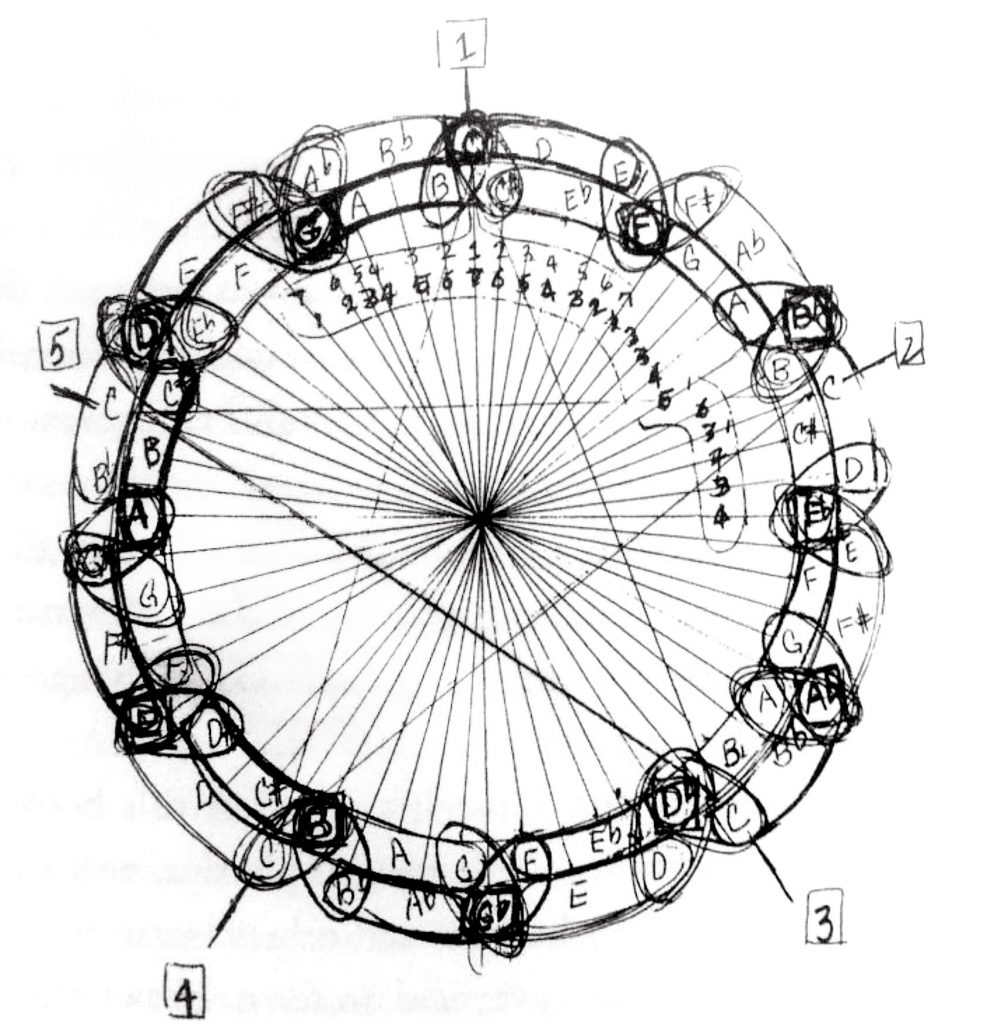Improvising can be an intimidating task for students, especially when they’re new to the process. The idea of having unlimited options of what to play can be overwhelming. It’s like going to a restaurant and being handed a large menu in a language you don’t speak. How do you even begin to choose? By placing purposefully chosen limits and guidelines on students, teachers can make the process more approachable and give students the direction they need to start building successful improvised solos.
Below are some limitations and guidelines I have found to be helpful when working with new improvisers.
Improvise on scale modes
This is a common approach because it works! By focusing on just a single scale, students don’t have to worry about keeping track of when chords change. Having the time to explore one scale also gives students an opportunity to learn the personalities of each scale tone. I have found Aebersold Vol. 24: Major and Minor to be a great resource for modal playing. The book includes a play-along track corresponding to each major and minor key – 24 in total. There are also a handful of tracks which move through various modes.
Limit note choices
Using the whole scale can be a little much to start with for some students. By limiting a student’s choices to three or four notes, two things can be accomplished at once. First, the student feels less overwhelmed due to having fewer options. Secondly (and perhaps more importantly), if the notes are chosen wisely, the teacher can guide the student to finding notes that clearly outline the key. Let’s choose G Dorian as an example. I like to describe the root (G) as home base. It’s a safe place to be and when you end a phrase on the root, it gives the phrase a sense of finality. If I’m limiting a student to three notes, I would choose G, Bb, and F. This provides a way to approach the root from above and below, giving the student two different ways to make it to home base. From there, I’d add D and then C, which round out the pentatonic scale, a widely used and recognizable sound. After that, add A and E, which should mostly be used as passing tones for beginners.
Provide short, rhythmic themes
One aspect beginning improvisers often struggle with is playing in time. They can get so caught up in note choices that time is simply forgotten about. Giving a student a simple one measure rhythm can get them started on the right foot. Start the solo with the specified rhythm played on a single note. Then play that rhythm again using different note choices. From there the student can branch out, but encourage them to come back to that rhythm. Not only will that rhythm set them up to play in time, but by coming back to it periodically the student is creating a recognizable theme that permeates the solo, simultaneously drawing in the listener while serving as an anchor for the soloist.
Work on ending phrases
Listening to beginning improvisers is often like listening to someone ramble through a bunch of run-on sentences. When improvising, it can be a challenge to know when to stop. I like to compare improvising to speaking by equating musical phrases to sentences. When reading a sentence, it ends with a punctuation and then there is a brief pause before moving on to the next sentence. Phrases need to have the same structure. Make a musical statement, put a period on it, and then wait a bit before beginning the next phrase. When students buy into this concept, their phrases start to have clear beginnings and endings, helping their solos sound more logical and mature.
These are just a few approaches I have found helpful. The bottom line is that by providing some easy to follow limits and guidelines, teachers can make the early stages of improvising less intimidating, more approachable, and more successful for their students.
